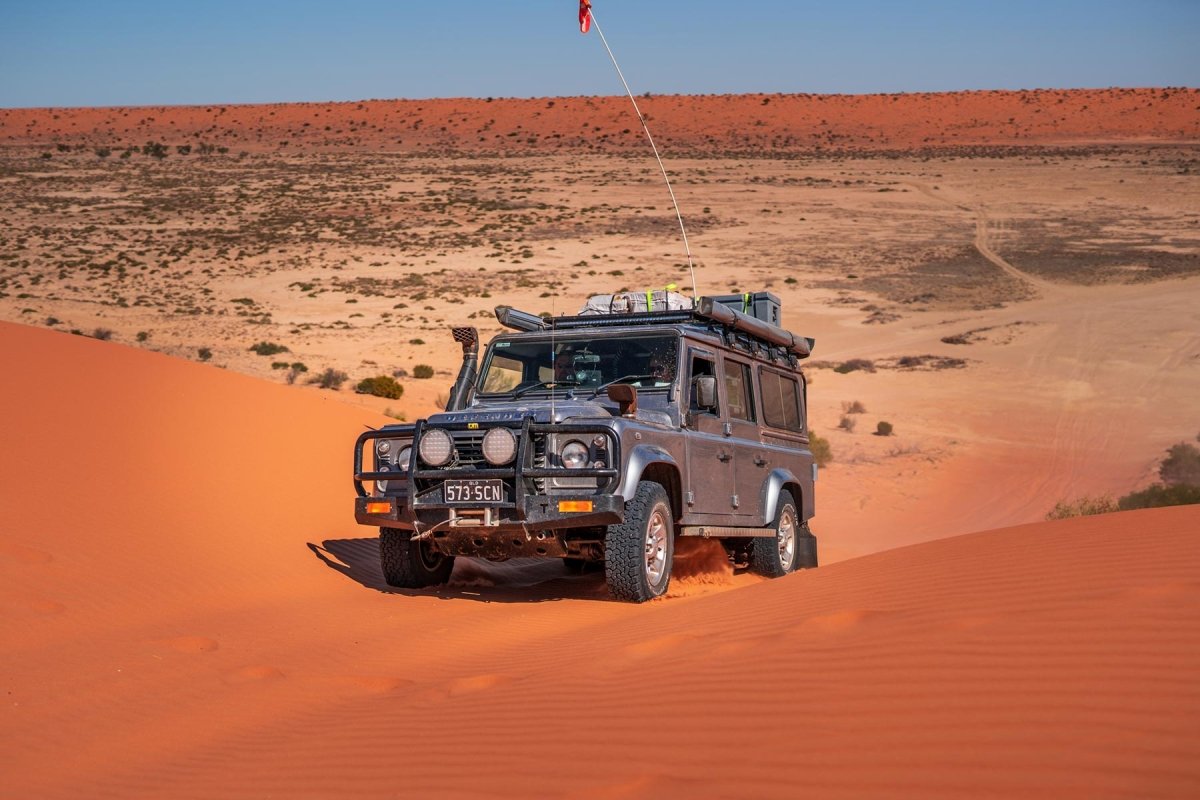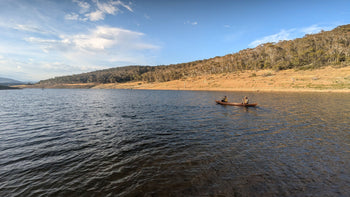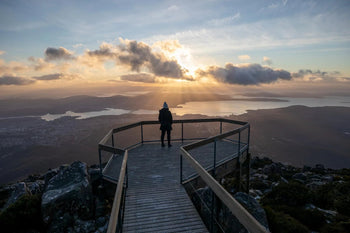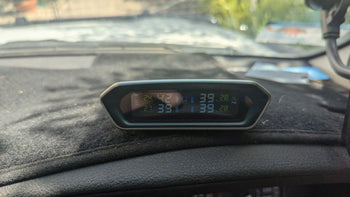

Want the rig of your dreams, but not entirely sure what you’re dreaming of? This handy guide will get you pointed to adventure.
Let’s set the record straight: when it comes to offroad adventure rigs, there’s no ‘best’ option — it’s all about what works for you. Unlike motorsports, where the fastest car takes the trophy, offroad adventures are about more than just performance. They’re about the memories you make, the places you see and the tracks you tackle to get there.
What might be the perfect rig for one person could be entirely wrong for another. Social media is packed with dreamy setups, like decked-out Unimogs crossing remote desert dunes — but that same 16T beast with a 4-metre roof height would be more of a headache than a help in the overgrown, muddy tracks of the hinterland.
But here’s the good news: you don’t need to be overwhelmed by options. Building your perfect rig is easier when you know what you need. Whether you’re after a quick weekend escape, a full week in the bush or gearing up for the lap of a lifetime, there’s a rig for that.
In this feature, we’ll break down the three levels of rigs, The Weekender, The Week-Away and The Big Lapper, to help you get the most out of your time in the bush. You’ll also pick up on a few potential pitfalls, so you can avoid any hiccups along the way and make sure you’ve got the right gear for the right adventure.
The Weekender: Your escape vehicle for short getaways

If you’re after quick, easy and affordable weekend getaways then the good news is the vehicle you need doesn’t have to be any more complicated than that. Versatility is the key here as chances are your adventure rig is also going to be the drive to work and get the groceries rig too. Think good fuel economy, easy to drive and easy to park. Sure, you won’t be bounding up rock ledges and knee deep in mud while the winch is screaming its head off, but if your idea of adventure is exploring back roads, camped up in improved campgrounds in national parks, you’ll be living for the weekend with this setup.
The rig
For this kind of adventure, you don’t need a heavy-duty 4x4, in fact the negatives of something larger and heavier here far outweigh the positives. Think car-based wagons with AWD capability. Cars like the Toyota RAV4 or Subaru Forester are near perfect. Later model ones will have decent offroad-focused traction control, paired with a low weight and they’re surprisingly capable when paired with a decent set of All-Terrain tyres. Their low roof height means even if you do fit a mild lift kit and roof rack, you’ll still be able to duck into most shopping centre car parks on a weekday and explore campgrounds and fire trails on the weekends.
The kit you’ll need
Since it’s only a weekend, you’re packing light and simple. Keep things simple here and you’ll feel like a bona fide explorer just spending the night at your local campground.
Handheld radio: Forget the $20 special, it’s worth buying a decent 5W unit so if you need to call for help your signal will reach more than 100m away. The Uniden XTRAK offerings are great for the money.
All-Terrain tyres: Even if you’re driving a Hyundai Getz consider All-Terrain tyres, they’ll offer more control on fire trails and be far more puncture resistant.
Downloaded maps/apps: Sure, you’re not crossing the Simpson Desert, but you will lose reception. Having good offline maps is a must — we recommend the Hema 4WD Maps app on your phone paired with local paper maps.
Icebox: The humble icebox (Esky is technically a brand) will weigh less and fit more food and drink for the space than a 12V fridge — get a decent one with your food pre-chilled and you’ll easily get a long weekend out of it.
Somewhere to sleep: No need for a $5k roof top tent just for a quick weekend away. The humble swag has been keeping Aussies dry for more than 100 years so should suffice for a weekend getaway. They’re not the most compact of things, but they’ll keep you far warmer in winter than a tent.
Portable cooking gear: A small butane stove, your favourite cast iron pan and some simple recipes. Quick and effective.
What holds you back
Icebox v fridge: If you’re sticking to a weekend, an icebox will do. But be mindful — ice melts … and room-temperature chicken is never fun.
Capability: An AWD will get you most places, but it won’t get you all places. If you think you’ll be off the beaten path a more serious offroader would be a good idea.
Space: A couple or solo traveller in a RAV4 with a simple camping setup can have some amazing outback adventures, but if you’re planning on taking the kids, the dog and a bunch of push bikes, you’ll run out of room quickly. Smart packing and a roof rack or roof rails can help.
The Week-Away: Mid-tier setups for extended trips
If you’re ready to be gone for a solid week or two, your build needs to take a step up. A week-long trip calls for more than just convenience — this is where some real offroad gear starts coming into play. You need something that can handle those more remote tracks, has more capability for sticky situations and is a bit more self-sufficient for more time off-grid. This is where you really start compromising from a daily car into an offroad machine.

The rig
Now’s when it’s time to step things up into the more traditional 4WDs people commonly think of, but we don’t need to go too silly yet. Think comfortable, capable wagons … the Ford Everest, Toyota Prado, Isuzu MU-X and Mitsubishi Pajero Sport are great options.
If you’ve got deeper pockets the LandCruiser 300 Series and Nissan Y62 Patrol both take the crown in this class. These will not only be more capable offroad than the ‘soft roaders’ we mentioned before, they’ll also be far more upgradeable and handle accessories a lot easier too. Utes are another option here, but they will ride rougher and have less weatherproof storage space than their wagon counterparts.
The kit you’ll need
Bar work: You don’t need to kit your daily driver out with a five-poster and head to Deni, but you’ll at least want some sort of armour up front. It’ll give you a place to mount driving lights, a winch if required and protect your rig’s cooling system so you’re not stranded after an animal strike.
Suspension lift: If you’re just touring and never leave high range, skip this step, but if you want to engage low range, it’s worth getting a slight lift. It’ll give a little ground clearance, handle weight a little better and make room for a slightly bigger tyre.
Built-in comms: Now’s the time to step up to a vehicle-mounted UHF like the XTRAK 80. It’ll allow reliable comms in convoy with your mates, and if you do need to call for help will both broadcast and receive over larger distances.
Roof Top Tent (RTT): When you’re out for more than a few nights, sleeping on the ground can get old fast. A roof top tent offers convenience and better protection from the elements, and you’ll get a far better night’s sleep too.
Fridge: It’s time to ditch the icebox and upgrade to a 12V fridge for reliably cold food and drinks for more than a few days. You may need a dual battery solution to run it though.
Storage: Leave the cheap tubs at home and step up to a decent storage solution. Drawers are always a solid choice, but if your wagon serves daily duties still something removable such as Flat Pack by Front Runner will be far more versatile day to day.
Shade: A simple but effective addition to give you a bit of shade or cover during downpours or belting sun. Step up to a free-standing wrap-around if the budget permits, but even a simple roll-out awning will get the job done.
More power: Even a small 12V setup can make a difference when you’re running fridges and charging devices.
What holds you back
Fuel and range: While you’re still somewhat near civilisation, you’ll need to carefully plan fuel stops, especially with heavier vehicles. No one wants to be caught short out on a track.
Weight: Adding things like RTTs, camping gear and bar work all add up in weight. Make sure you’re not eating too much into your GVM (Gross Vehicle Mass), or you could be in for a bad time.
Height: Your 4x4 will be far more capable on the tracks and at the campsites than a weekend warrior but you’ll definitely notice the difference around town. Navigating an underground car park will now be harder than navigating a desert.
The Big Lapper: Built to conquer the country

Here’s where we hit the big leagues — the lap-ready rig. When you’re gearing up to spend months on the road doing a full lap of Australia, there’s no room for shortcuts. This rig is a home on wheels, designed to be fully self-sufficient and capable of handling anything from outback dirt roads to long stretches of coastal highway.
The rig
Forget the wagons, it’s time to look at something with maximum space. Think dual cab utes, US trucks such as the RAM 2500 or Ford F-150, or even something like a 4x4 truck if wanting to make a statement. Unless you’re looking to tow a caravan or offroad camper, then utes with decked-out canopies are absolutely what you should be looking at. You’ll want something with serious power, payload capacity and offroad capability to give you the confidence to explore any track and park up in any campsite.
The kit you’ll need
Remote communications: Staying connected is more of a necessity than a luxury these days; satphones have been a popular choice for years. A Starlink will give you reliable internet no matter where you go. Or the latest iPhones can send emergency SMS over satellite networks too.
Suspension upgrade: This one is an absolute non-negotiable. The suspension your rig came with as standard is going to last three minutes on outback corrugations, and that’s if it can even handle the load anyway.
Extra fuel: Long-distance driving means long distances between fuel stops, especially in remote areas. Having auxiliary fuel tanks or jerry cans is essential.
Onboard water storage: Whether it’s in the form of a built-in tank or jerry cans, having fresh water on tap for drinking, washing and cooking is crucial.
Extensive 12V setup: With a rig this size, you’re running multiple electronics — fridges, lights, cooking gear, comms. A full power setup with a lithium battery, solar panels and an inverter is the way to go.
Built-in cooking: No more messing about with small camp stoves. An induction cooker built into your storage drawers or canopy setup will allow you to cook reliably without needing to lug around a gas bottle.
Toolkits and redundancies: Carrying spare parts, tools and recovery gear is non-negotiable. You need to be ready for breakdowns or emergencies and that means having the parts, the tools to fit them and the knowledge to do it.

What holds you back
Weight: Even with a GVM upgrade, weight management is a real challenge. A rig this size will be slower and heavier, and it’ll suck down the fuel.
Size: Large rigs such as LandCruisers or American pickup trucks are less manoeuvrable, making tight tracks or smaller campsites tricky.
Cost: The lap rig is an expensive build. Everything from the vehicle to the gear you load into it comes with a hefty price tag. But for long-term travel, you can’t really skimp.
Final thoughts

The right build depends on what you want out of your rig. A weekender keeps things light and flexible, while a week-away setup gives you the freedom to explore a bit more rugged terrain. For those tackling a lap of Australia, you’re looking at serious money, effort and gear, but the payoff is living your dream on the road without worrying about limitations. A $5k suspension setup may seem expensive these days, but how much is a month’s rent?
No matter which level you’re at, it’s important to remember that every addition to your rig has a purpose, but it also has a trade-off. Weight, power and space are the three factors you’ll juggle at every level. Get them right, and your trip will be smooth sailing … even when faced with unforgiving road conditions. Get them wrong, and you might end up calling for help in the middle of nowhere.
Whether you’re sleeping in a swag under a tarp, bounding up rock ledges with a set of external reservoir shock absorbers or digging a fire pit down the Oodnadatta with a DMOS shovel, there’s a rig and gear combo that’s perfect for your next road trip.



